Newsletter
-
Issue VIII / November 2013
- Editorial: EnercitEE – European networks, experience and recommendations helped cities and citizens to become Energy Efficient
- EnercitEE’s final conference in Brussels - European Energy Efficiency Directives – Tools and Recommendations for Regions and Cities
- 4 years of cooperation – EnercitEE partner regions reflect on their experiences
- How the Joint Technical Secretariat in Lille experiences the INTERREG IVC Miniprogram EnercitEE
- Recommendations for municipalities to take part in European projects
- EnercitEE partners got informed on sustainable mobility, renewable energy production and traditional activities in the Ravenna area
- EnercitEE Publicity material
- Issue VII / June 2013
- Issue VI / February 2013
- Issue V / June 2012
- Issue IV / November 2011
- Issue III / July 2011
- Issue II / January 2011
- Issue I / September 2010
Issue VIII / November 2013
Editorial: EnercitEE – European networks, experience and recommendations helped cities and citizens to become Energy Efficient
The newly adopted energy efficiency directive (2012/27/EU) highlights the importance of energy efficiency in reaching the Union’s 2020 targets. We, the EnercitEE partners, set our sights on preparing regions and cities to comply with future energy efficiency requirements, as well as on understanding other regional and local approaches within Europe, exchanging experiences and, in the end, helping build a joint European energy market.
After 4 years a successful and result oriented project will come to an end in December 2013. 5 European regions: Saxony, Southeast Sweden, Haute-Savoie, Emilia Romagna and Lower Silesia have contributed a great deal to improve energy efficiency.
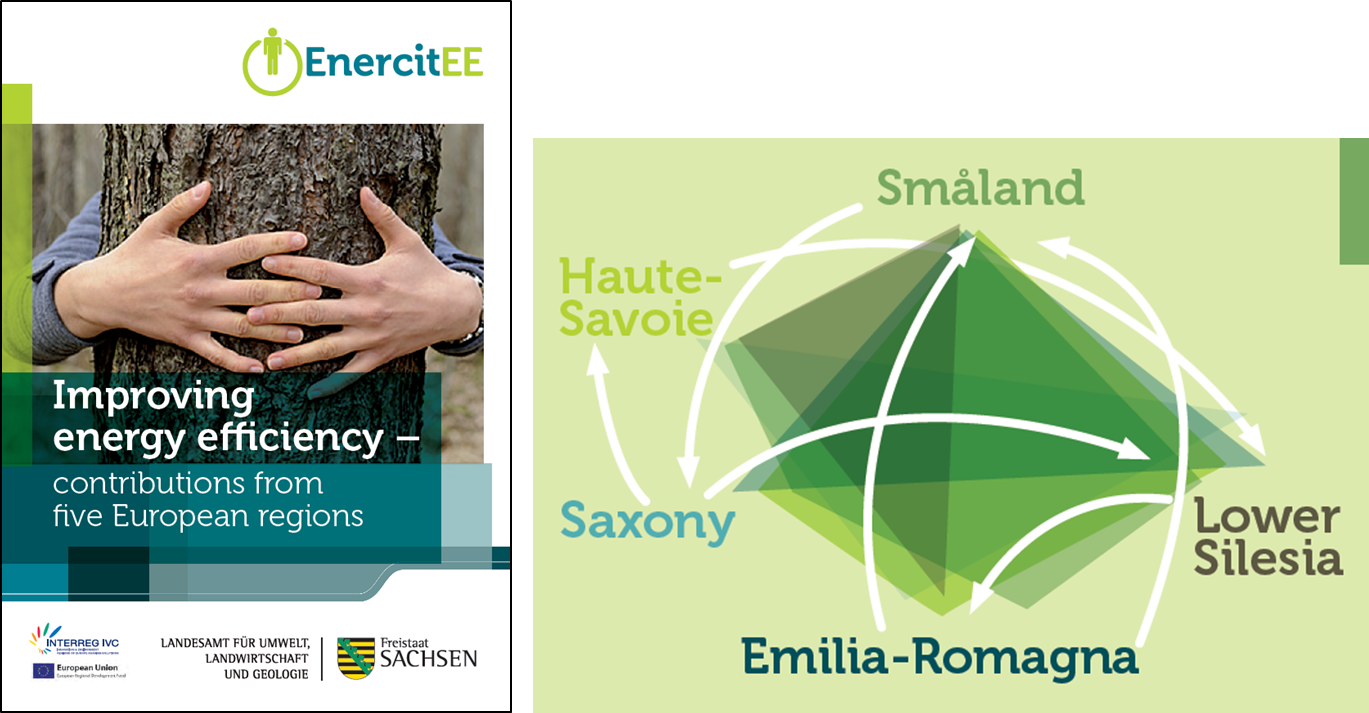
The exchange of experience has been an essential part of the programme. Interregional symposia, training sessions, study visits, a policy advice seminar and a policy maker exchange offered the possibility to discuss and compile political approaches, policy instruments, and examples of good practice and case studies. The eleven sub-projects of EnercitEE played an important role in increasing energy efficiency at the local level, both through policy making and small-scale pilot implementation. Learning from each other helped the partners in so many ways that everybody is looking back gratefully on the 4 years of EnercitEE:
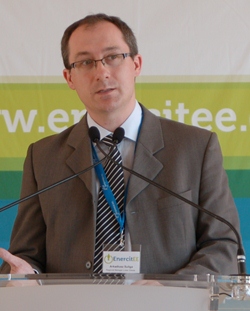 Arkadiusz Suliga (Lower Silesia): “Overall EnercitEE proved to be a great success as a means to raise awareness and mobilize both citizens and municipalities to improve their energy efficiency. It showed that interesting and benefitting activities do not require plenty of funds. As a result we strongly believe that the experience we gained and our firm motivation will guide us to other projects on energy efficiency in the future.”
Arkadiusz Suliga (Lower Silesia): “Overall EnercitEE proved to be a great success as a means to raise awareness and mobilize both citizens and municipalities to improve their energy efficiency. It showed that interesting and benefitting activities do not require plenty of funds. As a result we strongly believe that the experience we gained and our firm motivation will guide us to other projects on energy efficiency in the future.”
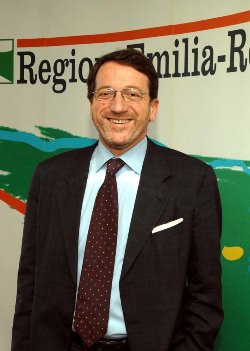 Gian Carlo Muzzarelli (Emilia-Romagna): “On 14 November 2007, the Emilia-Romagna Legislative Assembly approved the Regional Energy Plan. This plan represents a strategic instrument to rule and address the synergies between energy, economy and environment. Energy efficiency and energy saving are our first choice and our first investment, while citizens and local bodies represent the main stakeholders. Starting from this consideration, the region of Emilia-Romagna has found a perfect synergy between its Regional Energy Plan and the EnercitEE project, which represents an extraordinary instrument for sharing experiences and examples of best practice, allowing us to enhance our policies and stimulate change and creativity.”
Gian Carlo Muzzarelli (Emilia-Romagna): “On 14 November 2007, the Emilia-Romagna Legislative Assembly approved the Regional Energy Plan. This plan represents a strategic instrument to rule and address the synergies between energy, economy and environment. Energy efficiency and energy saving are our first choice and our first investment, while citizens and local bodies represent the main stakeholders. Starting from this consideration, the region of Emilia-Romagna has found a perfect synergy between its Regional Energy Plan and the EnercitEE project, which represents an extraordinary instrument for sharing experiences and examples of best practice, allowing us to enhance our policies and stimulate change and creativity.”
Gunnar Nordmark (Småland): “The regional council of Southern Småland and its Climate Commission is aiming to make the county the greenest region in Europe, not to compete for a title but to contribute to a sustainable future, not only for our small part of the world but for the entire planet. One single small European region cannot do everything but if we work together we can make a difference. That is why we through Energikontor Sydost participated in EnercitEE. In the county of Kronoberg regional authorities and municipalities have agreed to among other things focus on energy efficiency and sustainable transports. Giving local authorities and their citizens the opportunity to make climate smart chooses for the future is an aim. In these efforts the participating in EnercitEE has given us new knowledge, shown us good examples of best practice and is an inspiration in policymaking. EnercitEE has also helped in establishing contacts useful for the future and for being part of creating a sustainable and climate smart Europe.”
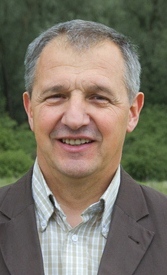 Pascal Bel (Haute-Savoie): „One of the main drivers of development in society is energy. Time is running out to make the transition to a low carbon society. EnercitEE was an opportunity to synthesize and share energy efficient experiences and know-how developed by different European regions in terms of energy efficiency. This mini-program, which drew together the strategic functions of five European regions to innovate on the topic, has allowed ambitious collective experiments. I am sure the partners will know how to take advantage of this experience in their regions in order to achieve the European targets for reduction consumption. The advantage of such an approach will benefit all.”
Pascal Bel (Haute-Savoie): „One of the main drivers of development in society is energy. Time is running out to make the transition to a low carbon society. EnercitEE was an opportunity to synthesize and share energy efficient experiences and know-how developed by different European regions in terms of energy efficiency. This mini-program, which drew together the strategic functions of five European regions to innovate on the topic, has allowed ambitious collective experiments. I am sure the partners will know how to take advantage of this experience in their regions in order to achieve the European targets for reduction consumption. The advantage of such an approach will benefit all.”
Werner Sommer (Saxony): „EnercitEE has been a gainful project for us. We learned a lot about the circumstances and approaches in other European regions and were able to take part in an effective exchange of experience. On one hand we were able to provide other regions with helpful energy efficiency solutions from Saxony; on the other hand we profited from our European partners and their experiences and could include their suggestions into our work.”
EnercitEE’s final conference in Brussels - European Energy Efficiency Directives – Tools and Recommendations for Regions and Cities
On 25th September 2013 EnercitEE’s final conference took place in the Saxony Liaison Office in Brussels. About 100 guests from DG Energy, the European Parliament, from many regional liaison offices and federations joined the EnercitEE partners, listened to their experiences made, to the good practices presented and discussed the results with them.

Monika Hoegen, an independent Brussels and Cologne-based journalist invited all guests to join her and the EnercitEE partners on a journey through Europe and the 5 EnercitEE regions Saxony, Smaland, Emilia-Romagna, Haute-Savoie and Lower Silesia showing the implementation of EU energy directives into regional policies and practices as well as giving practical implementation examples.

All partners concluded at the end of the day that the final conference has been successful and hopefully the results presented will find their way into many other European regions.
For more information on the final conference and its presentations please click here.
4 years of cooperation – EnercitEE partner regions reflect on their experiences
Reflections from Småland, Sweden
Another eye-opener was the well-developed communication projects that were introduced as sub-projects to EnercitEE. The exchange of information and experience in the sub-projects really made us take a big leap forward. The sub-projects were also an efficient way to make local level participate in EU-projects, which they normally find too difficult to administrate. In EnercitEE, we could assist them.
It has also been very interesting to learn more about the situation in different countries and we realise how important the structural funds are to bridge the gaps and make EU more coherent.
To look over the edge - benefits from interregional cooperation in Saxony
Amongst other topics, Saxony´s field of competence within EnercitEE “energy efficient buildings” was successfully evolved and existing know-how transferred to other regions by experience exchange on partner and on sub-project level.

Discussion with Saxon Sub-Project Participants during the Regional Final Event on 13 June 2013 (left)
Saxon municipalities directly involved in EnercitEE activities (right)
Reflections from Lower Silesia:
When the region of Lower Silesia was asked a couple of years ago to participate in a joint application for an INTERREG IVC project on energy efficiency, nothing was really clear and easy. Back then mini-programs were a mystery and Lower Silesian municipalities looked at the energy-related initiatives with a lot of suspicion. So we felt there was definitely hard work before us.
The quality of cooperation is another story. The longer the project’s duration, the more probable that something might go wrong. Fortunately, this was not the case with EnercitEE as all the partners were very open and willing to help at all times. There was always opportunity to learn something from each other, which kept the cooperation running at high level. Undoubtedly, the project effort was well worth it. We have the impression EnercitEE is really paving the way for Lower Silesian local authorities to undertake energy efficiency activities in international partnership with EU funds. Our feedback is that the municipalities will definitely look there for potential ventures and inspiration. Being the regional authority, that seems the biggest achievement for us. From an uncertainty, a lack of knowledge and the doubt to comprehension, we reached appreciation and involvement. We surely have gone a long way.
How the Joint Technical Secretariat in Lille experiences the INTERREG IVC Miniprogram EnercitEE
Authors:Johanna Bähn (Finance Officer) and Silke Brocks (Project Officer), INTERREG IVC Joint Technical Secretariat
“Learning by sharing – EnercitEE to INTERREG IVC”
This final edition of the EnercitEE newsletter is an opportunity for INTERREG IVC to look back at what the project has contributed to the programme. 'Regions of Europe sharing solutions' is the tagline of the interregional cooperation programme, and nowhere is this more evident than in projects such as EnercitEE. Regions with different approaches to energy strategies, all facing the same challenge to meet the 20-20-20 energy targets, 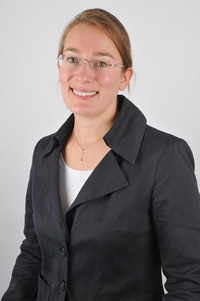 worked together to find the most adapted responses. At INTERREG IVC, we call this 'learning by sharing'. Interregional cooperation is one of the most effective tools available for regions to improve their own policies and instruments, without starting from scratch.
worked together to find the most adapted responses. At INTERREG IVC, we call this 'learning by sharing'. Interregional cooperation is one of the most effective tools available for regions to improve their own policies and instruments, without starting from scratch.
We are happy to see that the EnercitEE results have surpassed some of their initial targets: more good practices were identified, more staff members increased their knowledge in this domain than previously envisaged and the project has resulted in several spin-off activities. Even more than that, we are delighted to see that at least five regional policies have been improved. For instance, the Regional Development Strategy of Lower Silesia has been subject to a major update in 2012. Thanks to the EnercitEE partners, the new strategy includes the suggestion to establish a regional energy agency. For the programme, this is a clear example of the benefits of cooperation. These remarkable results would not have been possible without the extremely committed regional partners of EnercitEE which mobilised 47 sub-project partners in 11 sub-projects. We also had the chance to witness personally the high professionalism and very warm and friendly cooperation spirit of the partners during the meetings that we had the opportunity to attend.
 The EnercitEE partnership was one of 204 interregional cooperation projects financed - a select group considering the programme received more than 1350 applications in the 2007-2013 period. In total, more than 2350 public organisations are involved in cooperation projects across ten different thematic areas. Given the 'critical mass' of projects and partners dealing with similar issues, the programme set itself the objective to capitalise on the good practices identified by the projects it finances. The programme thematic capitalisation exercise focuses on collecting, analysing and disseminating the thematic knowledge gained from projects working on the same topic. The aim is to exploit the resulting knowledge for the benefit of local and regional authorities across Europe, and to help policymakers have a better impact at local, regional and European levels.
The EnercitEE partnership was one of 204 interregional cooperation projects financed - a select group considering the programme received more than 1350 applications in the 2007-2013 period. In total, more than 2350 public organisations are involved in cooperation projects across ten different thematic areas. Given the 'critical mass' of projects and partners dealing with similar issues, the programme set itself the objective to capitalise on the good practices identified by the projects it finances. The programme thematic capitalisation exercise focuses on collecting, analysing and disseminating the thematic knowledge gained from projects working on the same topic. The aim is to exploit the resulting knowledge for the benefit of local and regional authorities across Europe, and to help policymakers have a better impact at local, regional and European levels.
EnercitEE was one of 12 projects working in the domain of ‘Energy Efficiency’. The good practices identified by the EnercitEE partners, and others, were subject to expert analysis and benchmarking. After one year, the first report – available at www.interreg4c.eu/capitalisation – provides a comprehensive state-of-the-art of energy efficiency policy in Europe. Several EnercitEE good practices are highlighted as particularly beneficial for other regions.
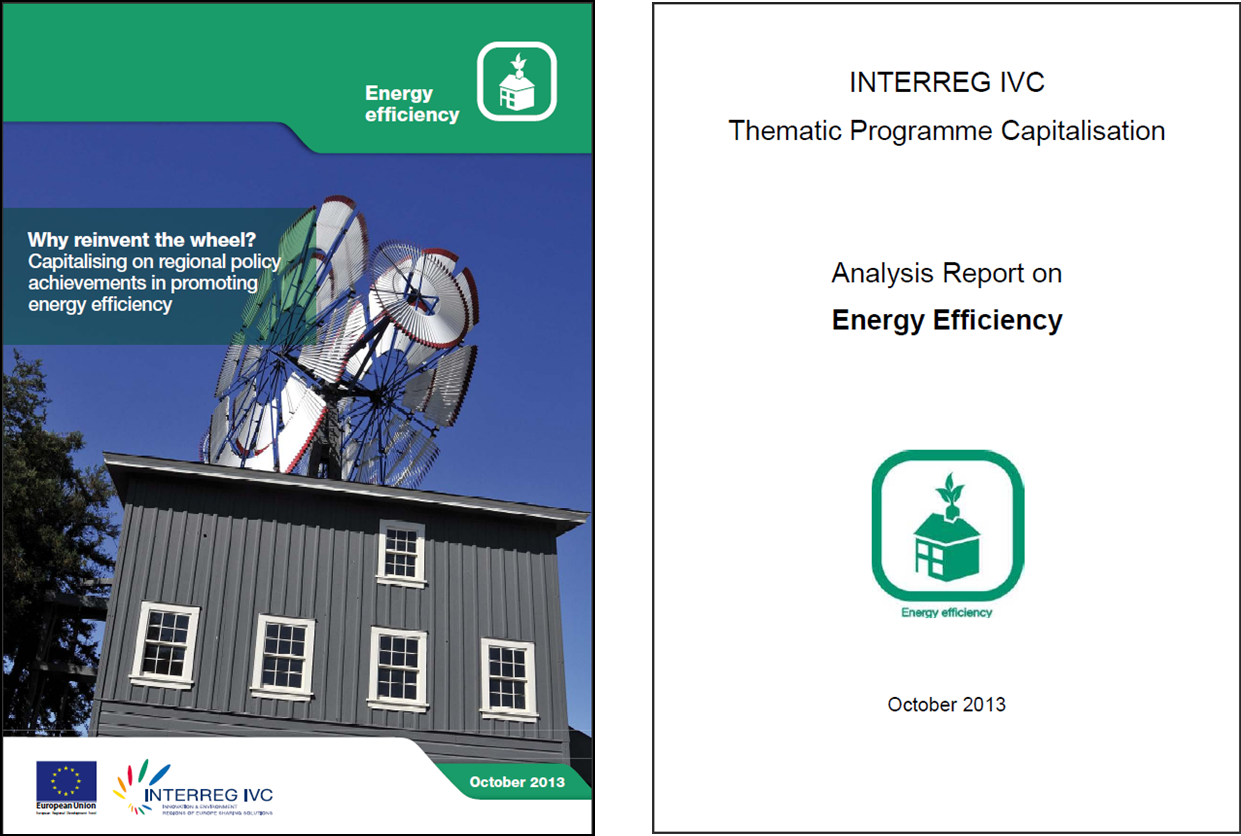
We would like to thank all EnercitEE partners for these valuable results and in particular for the very good and enjoyable cooperation over the past 4 years.
Recommendations for municipalities to take part in European projects
 Do you think it is difficult to take part in EU-projects? Does your municipality lack means to handle the administration of EU-projects?
Do you think it is difficult to take part in EU-projects? Does your municipality lack means to handle the administration of EU-projects?
Taking part in a mini-program could be the solution. The administration is rather simple and a regional partner supports you in the implementation and in reporting process. This possibility was given within the EU-program INTERREG IVC during the current period.
EnercitEE had 11 mini-program sub-projects where local authorities and organizations could cooperate and exchange experience and improve local and regional Energy Efficiency policies. The projects targeted either citizens or local authorities.
More than 20 local partners, NGO´s agencies and local authorities, from Germany, France, Poland, Italy and Sweden participated in this mini-program. Most of them had no previous experience from EU-projects and being part of a large EU-project has given them knowledge and courage to continue in other EU-programs.
For some of them it was also a wake-up when it comes to mitigation and adaptation to climate change. And experience showed that even with some initial reluctance coupled with disbelief present this issue was quickly accepted as part of a foremost mission to constantly increase the general standard of peoples’ living.
 European Territorial Cooperation programs offer a unique opportunity to implement certain activities on a smaller scale. Your municipality does not have to dedicate substantial resources nor base their whole future on the uncertainty of a project’s outcome. It is instead a form of assistance to support you in your regular activities and “probe” new solutions and schemes to be expanded later on. Therefore it is strictly advised for municipalities to take an active part in European projects. Look at the 11 EnercitEE sub-projects and their participants. The experience and the know-how they gained will not be forgotten – they will be the carriers of their future actions. Can you afford falling behind?
European Territorial Cooperation programs offer a unique opportunity to implement certain activities on a smaller scale. Your municipality does not have to dedicate substantial resources nor base their whole future on the uncertainty of a project’s outcome. It is instead a form of assistance to support you in your regular activities and “probe” new solutions and schemes to be expanded later on. Therefore it is strictly advised for municipalities to take an active part in European projects. Look at the 11 EnercitEE sub-projects and their participants. The experience and the know-how they gained will not be forgotten – they will be the carriers of their future actions. Can you afford falling behind?
Who knows what new conceptions and ambitions a cooperative project might give rise to in the end? Something that might have never been planned or discussed before - maybe a new vision?
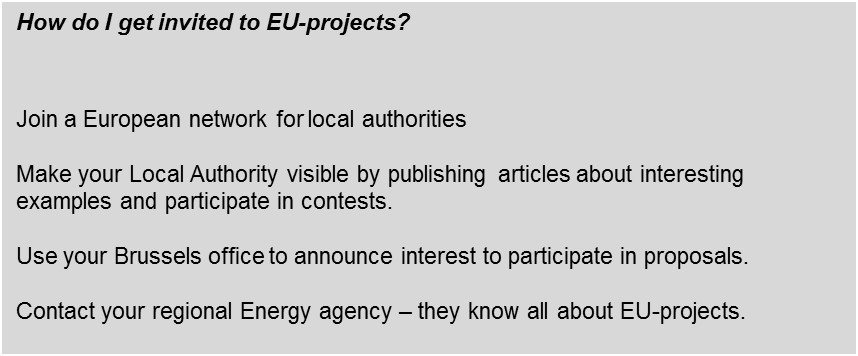
EnercitEE partners got informed on sustainable mobility, renewable energy production and traditional activities in the Ravenna area
In July 2013 a delegation of EnercitEE project partners visited Emilia-Romagna/Italy and its best practices in the area of Ravenna. To begin with, the delegation was traveling on board Mhybus, an innovative bus fuelled by a blend of 85% methane and 15% hydrogen, which allows significant savings in fuel consumption and reduction of CO2 emissions. This bus is the focus of the LIFE+ project Mhybus, which involves the Region, ASTER, SOL S.p.A. and START Romagna. The goal of the project is to increase efficiency and sustainability of public transport by using hydromethane for public transport vehicles. The bus has now travelled for more than 45.000 km without technical problems, demonstrating that the use of hydromethane is feasible, and is now close to the definitive authorization to circulate with hydromethane.
With Mhybus, the delegation reached the hydromethane fuelling station, designed and built within the premises of the hydrogen production plant of SOL S.p.A. in Ravenna. Here, a  guided tour on the plant’s facilities and performances took place, highlighting the efficiency of the processes taking place at the plant. The visit proceeded to the research laboratories of Tozzi TRE, a company focusing on energy production from renewable sources: hydroelectric, wind, solar and biomasses. The research and development laboratory in Mezzano works on technological upgrades in renewable energy production and on hydrogen production and storage technologies. The delegation was shown some of the developed products: an hydrogen fuelled electric bicycle and special dye-synthesized photovoltaic cells, transparent to sunlight.
guided tour on the plant’s facilities and performances took place, highlighting the efficiency of the processes taking place at the plant. The visit proceeded to the research laboratories of Tozzi TRE, a company focusing on energy production from renewable sources: hydroelectric, wind, solar and biomasses. The research and development laboratory in Mezzano works on technological upgrades in renewable energy production and on hydrogen production and storage technologies. The delegation was shown some of the developed products: an hydrogen fuelled electric bicycle and special dye-synthesized photovoltaic cells, transparent to sunlight.
Finally, the delegation visited Prato Pascolo, one of the largest photovoltaic plants in Italy. The project aims at joining sustainable energy production with the territory’s specific traditional vocation: the photovoltaic plant, one of the largest in Italy, with an area of 71 ha, is also a sheep grazing area. The photovoltaic plant produces 42 million kWh/year which are fed into the grid. This amount covers the demand of more than 10.000 families. If the same energy was produced by fossil fuels, about 23.000 tons of CO2 would be emitted.

While the sheep contribute to the maintenance of the grass field below the panels, these create large shade areas for the animals. Next to sheep breeding, cheese is manufactured on site following traditional recipes: breeding and handmade cheese manufacturing respect biological agriculture criteria. The EnercitEE partners were given a small tasting session of the types of cheese produced and sold on site, which concluded the short tour through the best practices of Emilia-Romagna in Ravenna.
EnercitEE Publicity material
EnercitEE Publicity material
The 7th EnercitEE newsletter is also available in:
Documents available for download
- Final Handbook "Improving energy efficiency - Contributions from five European regions"
- LEEAN "Guidebook for builders" from ERVET (Italian)
- ActEE "European Communication Tool Package"
- GRACE "Evaluation Summary"
- EEMTE "Manual"
